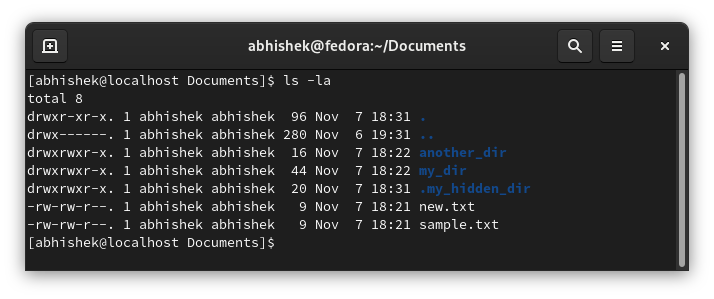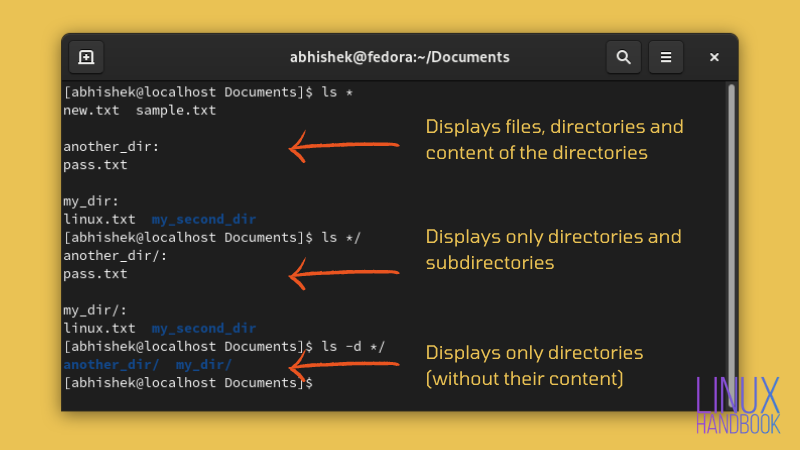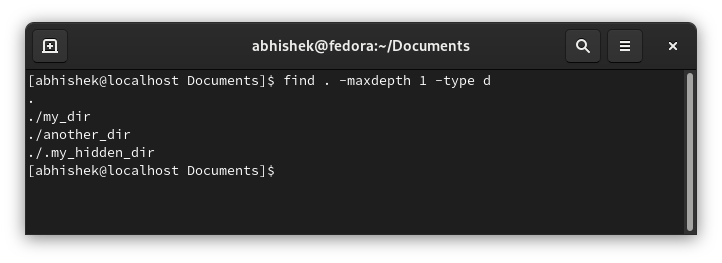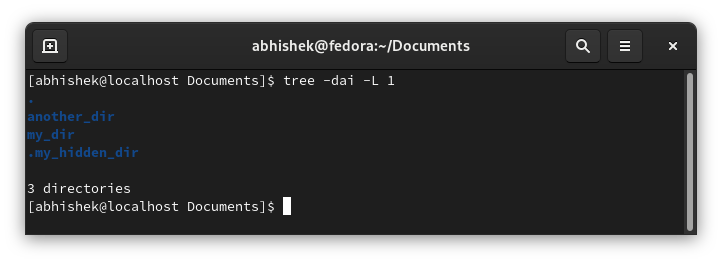How to List Only Directories in Linux
Listing the contents of a directory is easy. But what if you want to list only the directories, not files and links?

The ls command in Linux is used for listing the contents of any directory.
By default, it lists all the contents, be it a file or a directory or a link or a named pipe.
But what if you want to list only the directories? How do you do that?
Like anything in Linux, there are several ways to accomplish the same task. Listing only the directories is no different:
- ls -d */
- ls -l | grep '^d'
- find . -maxdepth 1 -type d
- echo */
- tree -d -L 1
Don't worry. I'll explain things in detail. Here's the content of the directory I am going to use in the examples here:

Use ls command to list directories only
It is always good to do it with the familiar ls command because this is the command you use for displaying the content of a directory.
To list only the subdirectories, use the -d option with ls command like this:
ls -d */Here's the output it shows:
[abhishek@localhost Documents]$ ls -d */
another_dir/ my_dir/
Why */? Because without it, ls -d will only return the directory name. The -d option list directories not its contents (which includes file, directories etc).
The */ is a pattern. With *, you list all the content (including contents of the subdirectories) and the / restricts the pattern to directories.
This picture depicts the difference pretty well.

You may combine it with the long listing option -l and most other options:
[abhishek@localhost Documents]$ ls -ld */
drwxrwxr-x. 1 abhishek abhishek 16 Nov 7 18:22 another_dir/
drwxrwxr-x. 1 abhishek abhishek 44 Nov 7 18:22 my_dir/If you do not want the trailing slash (/) at the end of the directory names, you can use the cut command to cut it out:
[abhishek@localhost Documents]$ ls -ld */ | cut -f1 -d'/'
drwxrwxr-x. 1 abhishek abhishek 16 Nov 7 18:22 another_dir
drwxrwxr-x. 1 abhishek abhishek 44 Nov 7 18:22 my_dir
List only subdirectories in a specific directory
The above command works in the current directory. What if you are not in the same directory?
In this situation, you can use */ at the end of the path of the directory with ls -d:
ls -d Path/To/Dir/*/Here's an example where I move out of the Documents directory and then list only the directories inside Documents directory:
[abhishek@localhost ~]$ ls -ld Documents/*/
drwxrwxr-x. 1 abhishek abhishek 16 Nov 7 18:22 Documents/another_dir/
drwxrwxr-x. 1 abhishek abhishek 44 Nov 7 18:22 Documents/my_dir/Did you notice that it doesn't list the hidden directory? That's one shortcoming of this method. You may use ls -d .*/ to display hidden directories, but it only displays hidden directories.
Use combination of ls and grep command
You can always rely on the good old grep command for filtering the output for specific content.
If you long list the contents, you can identify the directories because start with d.
You can use grep to filter the contents that start with d:
ls -l | grep '^d'But this gives you a lot more fields than just the directory names:
[abhishek@localhost Documents]$ ls -l | grep '^d'
drwxrwxr-x. 1 abhishek abhishek 16 Nov 7 18:22 another_dir
drwxrwxr-x. 1 abhishek abhishek 44 Nov 7 18:22 my_dir
Use find command to list only directories
Here's how to use the find command to list only the subdirectories:
find directory_path -maxdepth 1 -type dI hope you are familiar with the find command. I'll explain it nonetheless.
With type d, you ask the find command to only look for directories.
With maxdepth 1 you ask the find command to keep the search at the current level only (and not go inside the subdirectories).
[abhishek@localhost Documents]$ find . -maxdepth 1 -type d
.
./my_dir
./another_dir
./.my_hidden_dir

As you can see in the output above, it also shows the hidden directory.

Use tree command to list only directories
If your aim is to list only the directories, you may also use the tree command.
By default, the tree command gives you the complete directory structure. You can modify it to show only directories and only at the current level.
tree -dai -L 1- d - look for directories only
- a - look for hidden files and directories as well
- i - remove the tree structure from the display
- L 1 - don't go into the subdirectories
Here's the output:
abhishek@localhost Documents]$ tree -dai -L 1
.
another_dir
my_dir
.my_hidden_dir
3 directories

Using echo command for listing directories
The unlikely candidate? You'll be surprised to know that echo command in Linux can also be used for displaying the contents of a directory. Try using echo * and see for yourself.
Similar to the ls command, you can also use the */ pattern to list only the directories in the current working directory.
echo */Here's the output which is identical to what you got with the ls -d command:

There could be more ways for listing only the directories, not files. In fact, the methods discussed here may have some ifs and buts based on what you are looking for.
If your aim is to just display the directories, most of the commands I discussed would work. If you want something more specific like only getting the directories name with slash etc, you'll have to do some formatting on your own.
I hope you find this Linux tip helpful. Questions and suggestions are always welcome.
Creator of Linux Handbook and It's FOSS. An ardent Linux user who has new-found love for self-hosting, homelabs and local AI.

